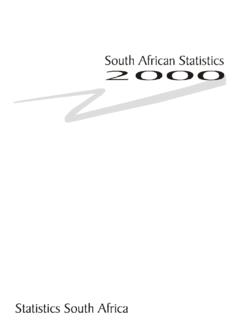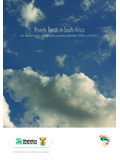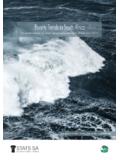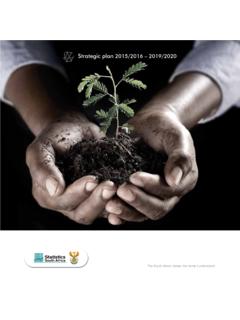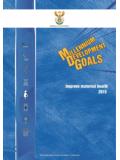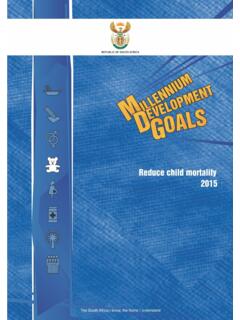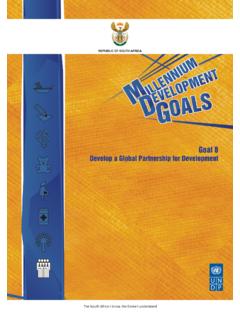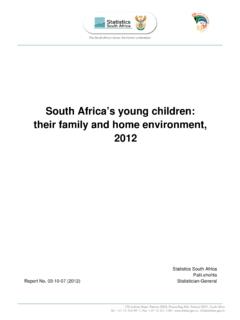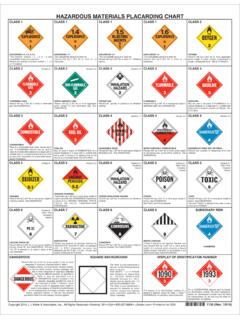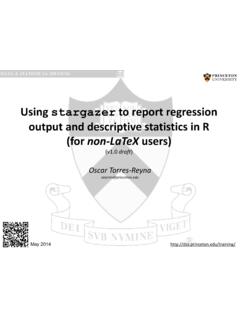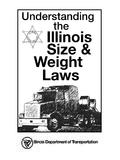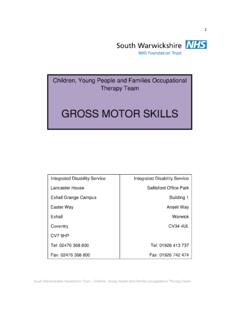Transcription of UPDATE OF THE WEIGHTS AND BASKET OF THE CONSUMER …
1 Private Bag X44, Pretoria, 0001, South Africa, ISIbalo House, Koch Street, Salvokop, Pretoria, 0002 , Tel +27 12 310 8911 UPDATE OF THE WEIGHTS AND BASKET OF THE CONSUMER PRICE INDEX (CPI) 31 January 2022 1. Introduction Statistics South Africa will UPDATE the CPI BASKET of goods and services, and the corresponding WEIGHTS , with effect from the January 2022 CPI release to be published on 16 February 2022. The BASKET represents the set of products purchased by South African households and the WEIGHTS are the shares of expenditure on each of these. The WEIGHTS and BASKET were last refreshed in January 2017. International practice requires that the WEIGHTS are updated at least every five years. In addition, the indices will be rebased so that December 2021 = 100. There will be no changes to the collection, processing or compilation methods of the CPI implemented with this UPDATE .
2 The sources and methods used to UPDATE the BASKET and WEIGHTS are consistent with international good practice. 2. Changes to the WEIGHTS In August 2021 Stats SA published an information note providing guidance on the method to be used to UPDATE the CPI WEIGHTS and BASKET . The note explains that while a survey of household expenditure usually forms the basis of the WEIGHTS , due to funding cuts, Stats SA has not been able to conduct this survey over the past five years ( ). Instead, the latest changes to the WEIGHTS are derived from the growth rates of the final household consumption expenditure (HFCE) component of the national accounts between 2016/2017 ( the average of 2016 and 2017) and 2019. Stats SA published benchmarked estimates of gross domestic product (including HFCE) in August 2021.
3 The benchmarking raised the overall level of household expenditure and provided new information on changes between product categories. The reference period for the new WEIGHTS will be 2019. This year was selected as it is prior to the significant COVID-19 related economic distortions of 2020, and the 2 HFCE data will not be subject to significant revisions. The expenditure values have not been price updated. While the national accounts do not provide the same level of product, geographic and demographic detail as a household expenditure survey, they have the advantage of deriving expenditure estimates from a wide range of data sources. Although the original intention was to supplement the national accounts with additional data sources, this proved not to be viable in the absence of the comprehensive and detailed information from a household survey.
4 The new WEIGHTS were computed at the most detailed level by applying the appropriate growth rates from the HFCE components to the current rand values in the CPI WEIGHTS set. The new CPI expenditure values were summed through the classification structure. Because there is not a perfect match between the CPI and HFCE list of products or their expenditure estimates, the realised CPI WEIGHTS growth rates differ from HFCE growth rates when computed at publication level. Due to the national accounts providing expenditure values for the country as a whole, the CPI WEIGHTS are first calculated at the level of total country. The values for headline CPI (all urban areas) are derived from the total country WEIGHTS by retaining the existing ratios between them. The same approach was used to derive provincial CPI WEIGHTS .
5 Table 1 shows the 2016 and 2019 headline CPI WEIGHTS and the difference between them. Table 1: CPI headline WEIGHTS 2016* and 2019 Category 2016 2019 Difference 2016 v 2019 Food and non-alcoholic beverages 17,24 17,14 -0,10 Alcoholic beverages and tobacco 5,82 6,26 0,44 Clothing and footwear 3,83 3,65 -0,18 Housing and utilities 24,62 24,49 -0,13 Household contents 4,35 4,37 0,02 Health 1,40 1,44 0,04 Transport 14,28 14,35 0,07 Communication 2,63 2,42 -0,21 Recreation and culture 5,16 5,20 0,04 Education 2,53 2,62 0,09 Restaurants and hotels 3,09 3,25 0,16 Miscellaneous goods and services 15,05 14,81 -0,24 Total 100 100 * The 2016 set of WEIGHTS refers to December 2016. 3 3. Changes to the BASKET The CPI BASKET has been refreshed to include those products attracting a significant share of CONSUMER expenditure in 2019.
6 The list of BASKET items was determined on the basis of detailed sales information provided to Stats SA by major retail chains. The number of products in the BASKET increases to 415 from 404 in the 2016 edition. A total of 14 products enter the BASKET and two fall out. One product has been split into two; in two cases, two products have been combined into one; and one product has been renamed. These changes are listed in Table 2. Table 2: Changes to the CPI BASKET Products entering the BASKET Category Product Food and non-alcoholic beverages Samp Dairy fruit juice blends Jam Pureed baby food Cappuccino sachets Alcoholic beverages Gin Household contents and services Floor and wall tiles Fabric softener Recreation and culture Printer cartridges Printer paper Soundbar and speakers Miscellaneous Wipes Makeup (foundation) Razors Products leaving the BASKET Category Product Recreation and culture DVD player Antenna and satellite dish Other BASKET changes Super and special maize meal combined into maize meal; Internet usage split between wireless (cellular) and wired (fibre, ADSL) forms of access; Energy saving and traditional lightbulbs combined into lightbulbs.
7 4 Pre-recorded CDs renamed to include music subscription and streaming music. Each BASKET item has a weight attached to it. Product level WEIGHTS were calculated using the ratio of new to existing products within each specific category. In most cases, the aggregate expenditure (after the HFCE adjustment) of a group remained fixed and the WEIGHTS of all products were adjusted to accommodate the new product. In certain cases, a new product has been added in a group that was not previously part of the BASKET and the associated expenditure value has been added to the total. 4. Rebasing All CPI indices will be rebased so that December 2021 = 100. It is good practice to periodically rebase indices to remove the effect of accumulated inflation. Rebasing does not affect the published rates of change of the indices although the weighted sum of lower level indices will not equal the aggregates for all periods prior to the rebasing.
8 All time series data will be rebased and available with the January 2022 CPI release. For more information please contact Marietjie Bennett Director: Price statistics compilation Patrick Kelly Chief Director: Price statistics
